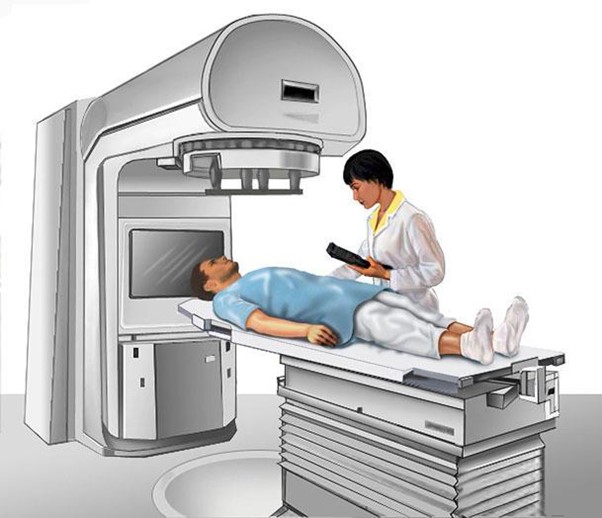A nurse in a provider’s office is caring for a client who asks about using acupuncture to manage his osteoarthritis pain.
The nurse should identify which of the following conditions as a contraindication for receiving this treatment?
Hypertension.
Hypothyroidism.
Obesity.
Herpes zoster.
The Correct Answer is D
Answer and explanation.
The correct answer is choice D. Herpes zoster is a contraindication for receiving acupuncture treatment because it is an infectious skin disorder that can be transmitted by needles or contact with the affected area. Acupuncture should not be performed on areas of skin that are inflamed, ulcerated, or have sensory deficit.
Choice A is wrong because hypertension is not a contraindication for acupuncture. However, some caution is advised when needling points that may lower blood pressure, such as LI 4, LI 11, ST 36, and SP 6.
Choice B is wrong because hypothyroidism is not a contraindication for acupuncture. In fact, some studies suggest that acupuncture may have beneficial effects on thyroid function and symptoms of hypothyroidism.
Choice C is wrong because obesity is not a contraindication for acupuncture.
Acupuncture may help with weight loss by regulating appetite, metabolism, and hormones.
Some of the absolute contraindications for acupuncture include pregnancy (especially certain points that may induce labor or abortion), medical and surgical emergencies, malignant tumors, bleeding disorders, and use of a demand pacemaker. Some of the relative contraindications include drug or alcohol intoxication, lack of consent, immune deficiency, abnormal heart valves, and fear of needles.
Normal ranges for blood pressure are 120/80 mmHg or lower for systolic and diastolic pressure respectively.
Normal ranges for thyroid-stimulating hormone (TSH) are 0.4 to 4.0 mIU/L.
Normal ranges for body mass index (BMI) are 18.5 to 24.9 kg/m2.
Nursing Test Bank
Naxlex Comprehensive Predictor Exams
Related Questions
Correct Answer is A
Explanation
Choice A reason:
"You might experience altered taste sensations" is the correct statement. When providing teaching to a client about to undergo external radiation therapy for cancer, the nurse should include information about potential side effects and what to expect during the treatment. One common side effect of radiation therapy, especially when the treatment is focused on or near the head and neck region, is altered taste sensations. Radiation can affect the taste buds and lead to changes in how foods taste.
Choice B reason:
"Use rubbing alcohol to remove the ink markings. “The statement is incorrect. The ink markings made on the client's skin are used as reference points for the radiation therapy treatment. It is essential not to remove these markings, as they are crucial for accurate positioning during each treatment session. The nurse should instruct the client not to tamper with the markings, and the radiation therapy team will remove them when they are no longer needed.
Choice C reason:
"Wear a binder over the radiation site." The statement is incorrect. Wearing a binder over the radiation site is not a standard practice during external radiation therapy. The client should be instructed to follow the specific guidelines provided by the radiation therapy team regarding clothing and positioning during treatments. The use of binders or other tight clothing over the treatment area may not be recommended, as it can cause discomfort or interfere with the delivery of radiation.
Choice D reason
"Wash your skin thoroughly with a washcloth after each treatment." Is incorrect statement. During radiation therapy, the skin in the treatment area can become sensitive. It is essential for the client to follow the specific instructions provided by the radiation therapy team regarding skin care. Generally, the client should avoid using harsh soaps or scrubbing the skin vigorously. Instead, they should gently cleanse the area with a mild soap or as directed by their healthcare providers.

Correct Answer is A
Explanation
Choice A reason:
Measuring the arm circumference above the insertion site daily is appropriate. When planning care for a client scheduled to receive a peripherally inserted central catheter (PICC) in the arm, it is appropriate for the nurse to include measuring the arm circumference above the insertion site daily. This intervention is essential to monitor for any signs of complications, such as edema or swelling, which could indicate thrombosis or infiltration at the insertion site.
Choice B reason:
Administering sedation Administering sedation is not a routine intervention for a PICC insertion procedure is inappropriate. Sedation might be considered for certain procedures, but it is not typically used for PICC insertions. PICC insertions are generally performed with local anaesthesia at the insertion site.
Choice C reason:
Scheduling an MRI post procedure to verify placement An MRI is not typically used to verify the placement of a PICC. The placement of a PICC is usually confirmed using X-ray or other imaging methods that can visualize the catheter's location within the central veins. Post-procedure verification of PICC placement is essential to ensure proper positioning and to prevent complications.
Choice D reason:
Using gauze to secure an arm board to the involved extremity Using gauze to secure an arm board to the involved extremity is not a common practice for securing a PICC. After a PICC insertion, a securement device specifically designed for PICCs is typically used to secure the catheter in place and prevent movement.
Whether you are a student looking to ace your exams or a practicing nurse seeking to enhance your expertise , our nursing education contents will empower you with the confidence and competence to make a difference in the lives of patients and become a respected leader in the healthcare field.
Visit Naxlex, invest in your future and unlock endless possibilities with our unparalleled nursing education contents today
Report Wrong Answer on the Current Question
Do you disagree with the answer? If yes, what is your expected answer? Explain.
Kindly be descriptive with the issue you are facing.
